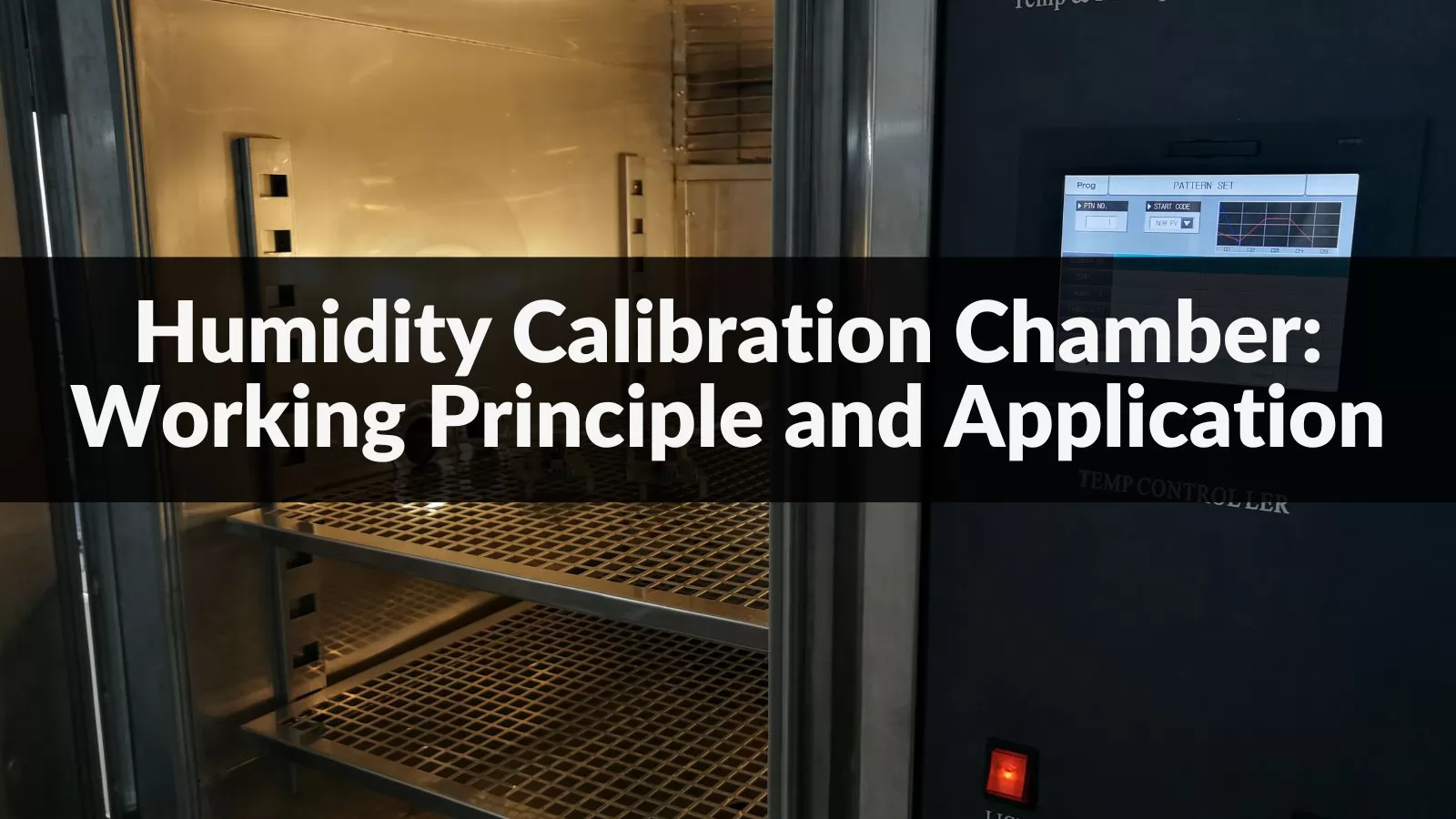
Humidity calibration chambers play a critical role in ensuring the accuracy and reliability of humidity measurements. They find extensive applications in scientific research, industrial production, daily life, and many other fields. This article will explore the applications of humidity calibration chambers in detail and provide real-world case studies for illustration.
| 1. | What is a humidity calibration chambers? |
|---|---|
| 2. | How does it work? |
| 3. | How is calibration done? |
| 4. | Major Application Areas? |
| 5. | Conclusion |
What is a humidity calibration chambers?

A humidity calibration chamber, also known as a humidity calibrator, is a specialized device used to ensure the accuracy and reliability of humidity measurements taken by sensors and instruments. It plays a crucial role in various scientific and industrial applications where precise humidity control is essential.
How does it work?

Imagine a tightly controlled environment where both temperature and humidity levels can be precisely adjusted. This is essentially what's happening inside a humidity calibration box. The box uses various mechanisms to maintain this controlled environment, including:
1. Temperature control:
This is achieved using heating elements and/or cooling coils, regulated by a PID controller (proportional-integral-derivative controller) to ensure precise temperature stability.
2. Humidity control:
This can be achieved through several methods,such as:
2.1.Saturated salt solutions: These solutions create a specific and constant humidity level within the box depending on the salt used.
2.2.Dehumidifiers: These devices remove moisture from the air within the box, reducing the overall humidity.
2.3.Humidifiers: These devices add moisture to the air within the box, increasing the overall humidity.
How is calibration done?
The calibration process within a humidity calibration box typically involves the following steps:
1. Preparation:
The sensor or instrument to be calibrated is placed inside the box, ensuring proper positioning and allowing it to stabilize within the controlled environment.
2. Calibration:
The desired temperature and humidity levels are set within the box. The sensor readings are then monitored and compared with reference values from a known-accurate humidity source. Any discrepancies are noted.
3. Verification:
Based on the comparison, adjustments might be made to the sensor or instrument to align its readings with the reference values. This process ensures the sensor's accuracy and reliability.
Major Application Areas
Humidity calibration chambers play a key role in ensuring the accuracy and reliability of humidity measurements. They are widely used in scientific research, industrial production, daily life and many other fields. This article will explore in detail the main application scenarios of humidity calibration chambers and provide practical case studies to illustrate.、
Scenario 1: Meteorology
Humidity is a crucial factor affecting weather and climate. Meteorological departments use humidity calibration chambers to ensure the accuracy of humidity measuring instruments, which in turn improves the precision of weather forecasting and atmospheric monitoring. For example, in weather stations, humidity calibration chambers are used to regularly calibrate hygrometers, wet and dry bulb thermometers, and other instruments, ensuring that their measurement data is accurate and reliable, providing basic data for weather forecasting.
Scenario 2: Pharmaceuticals
Humidity has a significant impact on the production, storage, and transportation of drugs. Pharmaceutical companies use humidity calibration chambers to ensure that the humidity in production environments and storage facilities meets the required standards, thus guaranteeing drug quality. For example, in pharmaceutical factories, humidity calibration chambers are used to calibrate humidity sensors in production workshops, ensuring that the workshop humidity meets the requirements of drug production processes and preventing drug deterioration caused by moisture.
Scenario 3: Electronics
Electronic components are sensitive to humidity. Excessive humidity can lead to component failure or even damage. Electronics manufacturers use humidity calibration chambers to ensure that the humidity in production environments meets the requirements, thereby improving the quality and reliability of electronic products. For example, in the production workshops of electronic components, humidity calibration chambers are used to regularly calibrate the humidity sensors on the production line, ensuring that the production environment humidity meets the requirements of the electronic component production process and reduces the risk of component damage.
Scenario 3: HVAC
Humidity is a significant factor affecting indoor comfort and health. HVAC systems use humidity calibration chambers to ensure the accuracy of indoor humidity control, providing users with a comfortable indoor environment. For example, in building HVAC systems, humidity calibration chambers are used to calibrate indoor humidity sensors, ensuring that the indoor humidity control system can accurately adjust the indoor humidity according to the set value, providing users with a comfortable indoor environment.
Scenario 4: Food Processing
Humidity has a significant impact on food shelf life and safety. Food processing companies use humidity calibration chambers to ensure that the humidity in production environments and storage facilities meets the requirements, thereby extending food shelf life and improving food safety. For example, in food processing plants, humidity calibration chambers are used to calibrate humidity sensors in food production workshops and storage warehouses, ensuring that the production and storage environment humidity meets food safety standards and preventing food spoilage.
Conclusion
Humidity calibration chambers are essential tools for ensuring accurate and reliable humidity measurements. They play a vital role in various fields. With the development of science and technology and the improvement of people's living standards, the application of humidity calibration chambers will become more extensive.
If you have other questions, please contact us!



